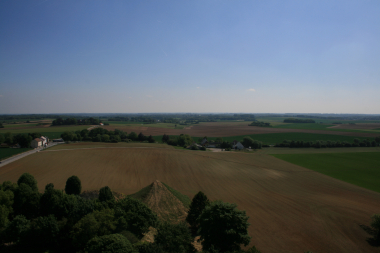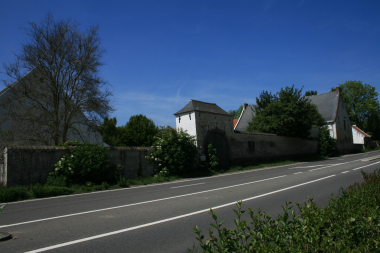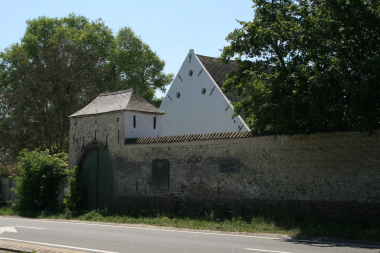
La Haie Sainte Farmhouse
I mentioned a while back that I had been over to Belgium for a short break to visit the Waterloo Battlefield. I went with my war-gaming buddy, Pete Harris. We spent a couple of days visiting Ypres looking at WW1 museums and then went on to spend a couple of days at Waterloo. It’s surprising how much you can fit into a few days if you are well prepared – there isn’t space in a short blog article to cover everything that we saw, so I thought that I would put together a few short pieces reviewing various facets of the trip.
The great thing about visiting the actual battlefield is that you can see for yourself just how things were, how the land really lies and gain true perspective on the size of objects & the distances involved. You can also walk in the footsteps of the combatants and try to imagine just what they would have seen and how they would have felt. I have been reading about the Battle of Waterloo since I was 15 – I still have the first book that I read ‘Waterloo – A Near Run Thing’ by David Howarth. Interestingly, it is David Howarth who has written the Official Guide to the Battlefield that is sold in the Battlefield Gift shop.
So although I had seen many pictures of the battlefield, read many accounts and looked at the maps, it was only when I actually saw the battlefield did I begin to really grasp what may have happened. Incidentally, one of my favourite quotes from Wellington is as follows:
The history of a battle, is not unlike the history of a ball. Some individuals may recollect all the little events of which the great result is the battle won or lost, but no individual can recollect the order in which, or the exact moment at which, they occurred, which makes all the difference as to their value or importance.

The Crossroads & La Haie Sainte
So with that in mind, here are a few pictures of La Haie Sainte with some of my observations. The photograph at the top of the article shows La Haie Sainte as we look to the west from the Lion Mound. The first thing that struck me was how big the Farm was. It more of a large complex than I had imagined and although set well forwards from Wellingtons main defensive line, nestled down on the side of the valley, it made an impressive defensive position. The photograph to the right shows the position of La Haie Sainte in relation to the crossroads. Any attack on Wellingtons Centre would have to pass by this strong point.

La Haie Sainte – Road view
The next picture shows the western side of Farm and the road as it is now. This road runs straight on to to the cross road and from there to Brussels. The slope on the road is about right – it’s not me with a dodgy camera angle! It just goes to show that the area wasn’t flat ( I think that wargamers prefer nice flat tables but it doesn’t really reflect reality!) The other thought that struck me was how tall the walls were. It wasn’t going to be easy to climb over those in full kit, especially with the Kings German Legion defenders inside doing their utmost to stop you!
One of the mysteries of the battle is why the french didn’t use artillery to breach these walls. I just wonder if because of the position of the farm in the landscape, none of the French Commanders could see how difficult it was to breach these walls. The main gate was particularly defensible and the higher walls could probably be left unmanned as unless the troops had ladders, there was no easy way over. Of course, the buildings face into the farm complex, presenting the sheer sides to the outside – the owners built this farm to keep out intruders! The picture below show the Main gate and part of the higher wall that runs down the West side.
La Haie Sainte was eventually taken by the French during the battle. At around 6.30pm, exhausted and practically out of ammunition, Major Baring, leading the defense, ordered the remnants of his command to retreat to the British lines. Only about forty of the 360 defenders made their escape – a terrible toll to pay in the defense of the farm.
For the French, any sense of victory would have been tempered by the fact that although they had captured the Farm house, the British lines remained intact further up the slope.
Even worse, the Prussians were coming!
